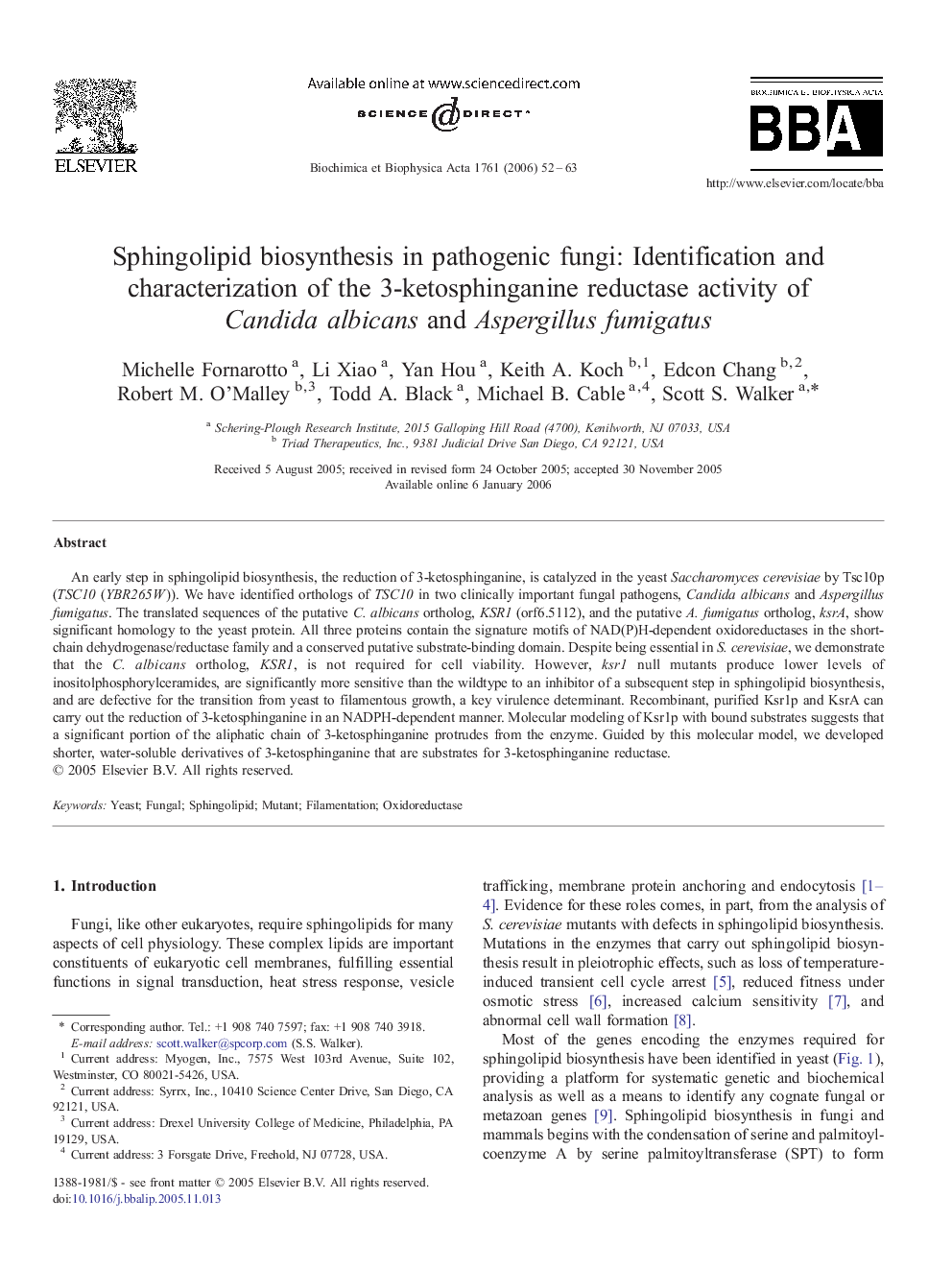| Article ID | Journal | Published Year | Pages | File Type |
|---|---|---|---|---|
| 1950362 | Biochimica et Biophysica Acta (BBA) - Molecular and Cell Biology of Lipids | 2006 | 12 Pages |
An early step in sphingolipid biosynthesis, the reduction of 3-ketosphinganine, is catalyzed in the yeast Saccharomyces cerevisiae by Tsc10p (TSC10 (YBR265W)). We have identified orthologs of TSC10 in two clinically important fungal pathogens, Candida albicans and Aspergillus fumigatus. The translated sequences of the putative C. albicans ortholog, KSR1 (orf6.5112), and the putative A. fumigatus ortholog, ksrA, show significant homology to the yeast protein. All three proteins contain the signature motifs of NAD(P)H-dependent oxidoreductases in the short-chain dehydrogenase/reductase family and a conserved putative substrate-binding domain. Despite being essential in S. cerevisiae, we demonstrate that the C. albicans ortholog, KSR1, is not required for cell viability. However, ksr1 null mutants produce lower levels of inositolphosphorylceramides, are significantly more sensitive than the wildtype to an inhibitor of a subsequent step in sphingolipid biosynthesis, and are defective for the transition from yeast to filamentous growth, a key virulence determinant. Recombinant, purified Ksr1p and KsrA can carry out the reduction of 3-ketosphinganine in an NADPH-dependent manner. Molecular modeling of Ksr1p with bound substrates suggests that a significant portion of the aliphatic chain of 3-ketosphinganine protrudes from the enzyme. Guided by this molecular model, we developed shorter, water-soluble derivatives of 3-ketosphinganine that are substrates for 3-ketosphinganine reductase.
